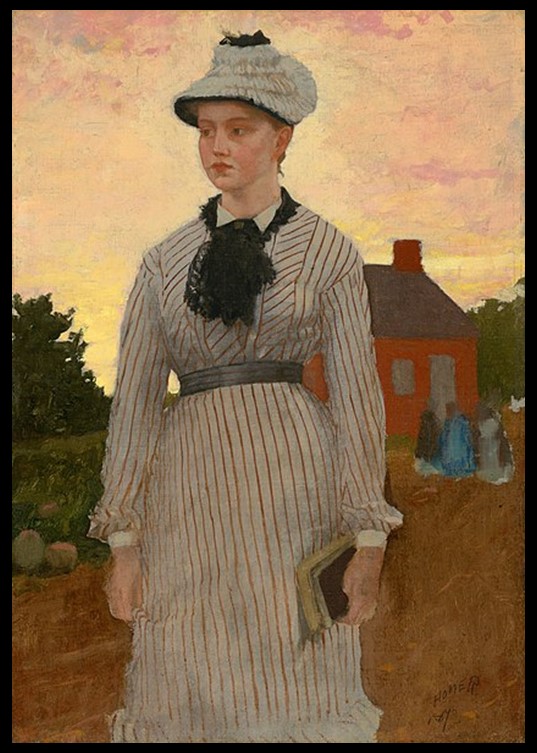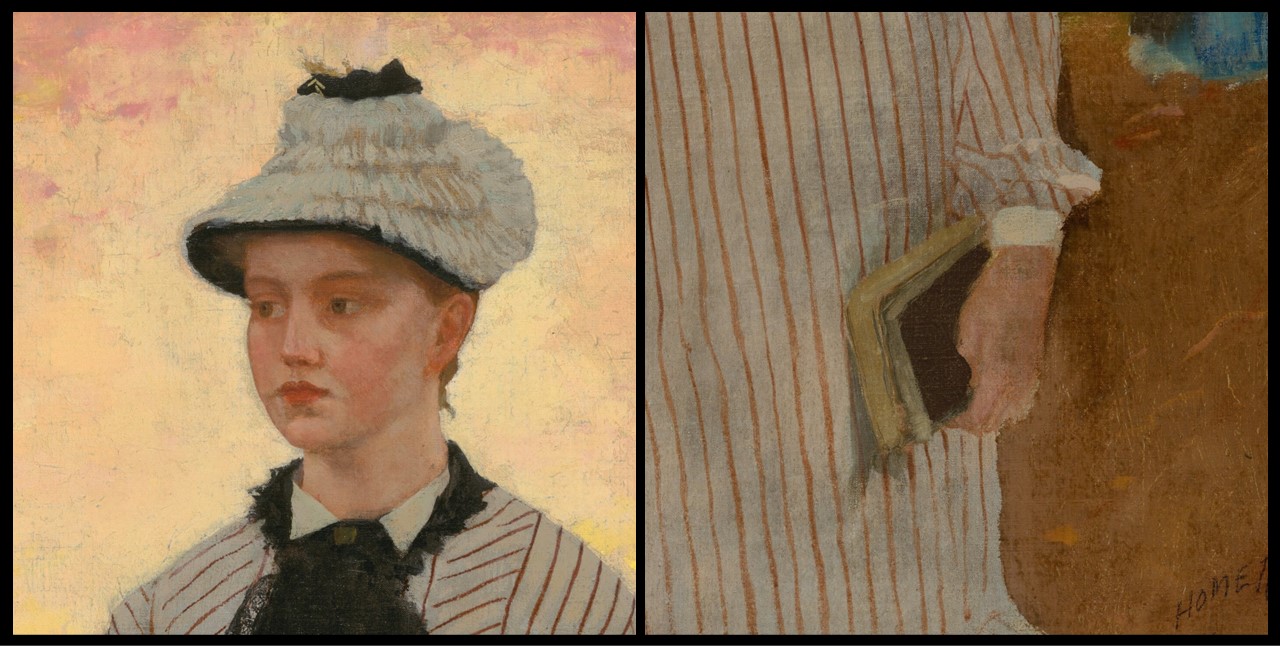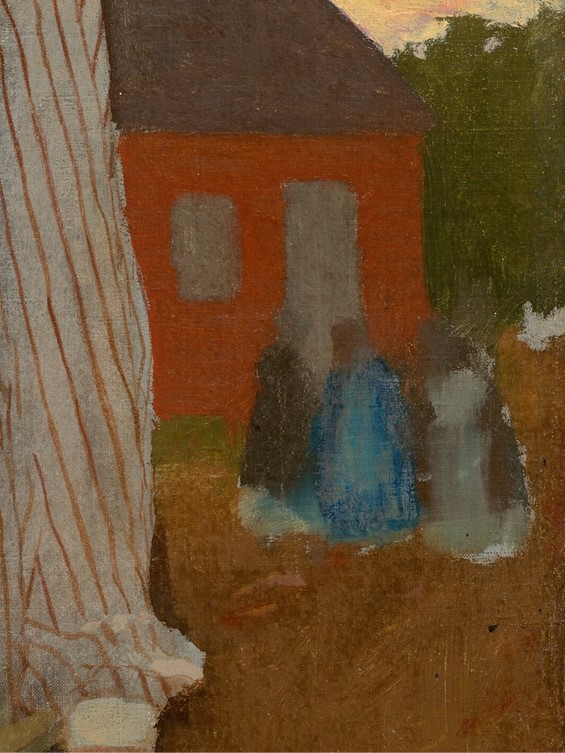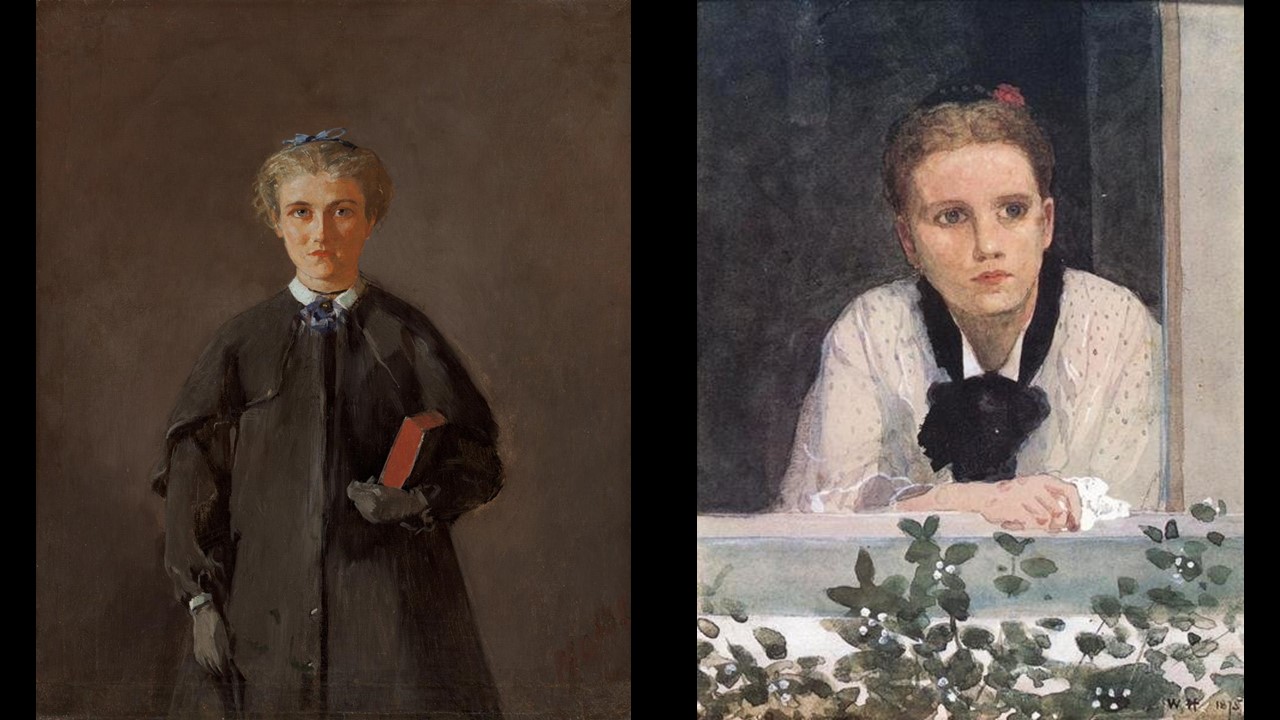
The Red School House, 1873, oil on canvas, 55.5 x 39.5 cm, NGA, Washington DC, USA https://www.nga.gov/collection/art-object-page.66419.html
On the 5th of October, we celebrate World Teachers’ Day, acknowledging the critical role teachers play in achieving inclusive, quality education for all… and recognizing that during the pandemic …teachers have shown, as they have done so often, great leadership and innovation in ensuring that #LearningNeverStops, that no learner is left behind. Around the world, they have worked individually and collectively to find solutions and create new learning environments for their students to allow education to continue… I would like to celebrate World Teachers’ Day by remembering Homer’s words (Iliad 9.437-443)… The old man and horse-trainer Peleus… sent me (Phoinix) for this reason: to teach you (Achilles) all these things, / how to be a speaker of words and a doer of deeds, and by looking deeper into a Painting… The Red School House by Winslow Homer. https://en.unesco.org/commemorations/worldteachersday
Winslow Homer is one of the finest 19th-century American Artists. His career started as a graphic reporter during the American Civil War with paintings like Home, Sweet Home, and Sharpshooter on Picket Duty, of 1863, or Prisoners from the Front, of 1866 defining his early career. The late 1860s and the 1870s were, however, the artist’s finest years of artistic experimentation and prolific and varied output. Living and working in New York, but traveling to Paris, in late 1867, for the exhibition of two of his Civil War Paintings at the Exposition Universelle, Homer came face to face with the French avant-garde, and although there is little likelihood of influence, the artist shared their subject interests, their fascination with serial imagery, and their desire to incorporate into their works outdoor light, flat and simple forms (reinforced by their appreciation of Japanese design principles), and free brushwork. https://www.metmuseum.org/toah/hd/homr/hd_homr.htm

The Red School House (details teacher), 1873, oil on canvas, 55.5 x 39.5 cm, NGA, Washington DC, USA https://twitter.com/ngadc/status/1468980569300258821/photo/1 and https://twitter.com/ngadc/status/1468980569300258821/photo/2
The Red School House is one of several paintings Winslow Homer created from 1871 to 1874. They all shared the same theme… scenes of school life, with three consistent elements: a small red schoolhouse, its young female teacher, and a luminous mountain setting. The NGA experts believe that Homer working after the American Civil War was expressing a popular wave of nostalgia in late 19th-century America for small country schools and the simpler lifestyle and the country’s sense of optimism for future generations. https://www.nga.gov/collection/art-object-page.66419.html

The Red School House (detail students), 1873, oil on canvas, 55.5 x 39.5 cm, NGA, Washington DC, USA https://twitter.com/ngadc/status/1468980569300258821/photo/3
Although titled The Red School House the painting is in fact a portrait, NGA experts explain, in which the schoolhouse and its attendant figures are secondary and very abbreviated parts. The name of the person depicted is not known, but her high cheek bones and down-turned mouth are similar to the features of the person in such other works as The School Girl, c. 1871, who represents a school teacher, and Young Girl at the Window of 1875 (fi&- 4)5 who wears a black fichu at her neck. More information on The Red School House can be found in the NGA publication American Paintings of the Nineteenth Century, Part I, pages 305-309, which is available as a free PDF at… https://www.nga.gov/content/dam/ngaweb/research/publications/pdfs/american-paintings-19th-century-part-1.pdf
For a Student Activity on the Little Red School House, please… Check HERE!

The School Girl, 1871, oil on canvas, 47.6×39.7 cm, Worcester Art Museum, MA, USA https://commons.wikimedia.org/wiki/File:Winslow_Homer_-_The_School_Mistress_%28c.1870%29.jpg
Young Girl at Window, 1875, watercolor, the New Britain Museum of American Art, CT, USA https://www.globalgallery.com/detail/373299/homer-young-girl-at-window